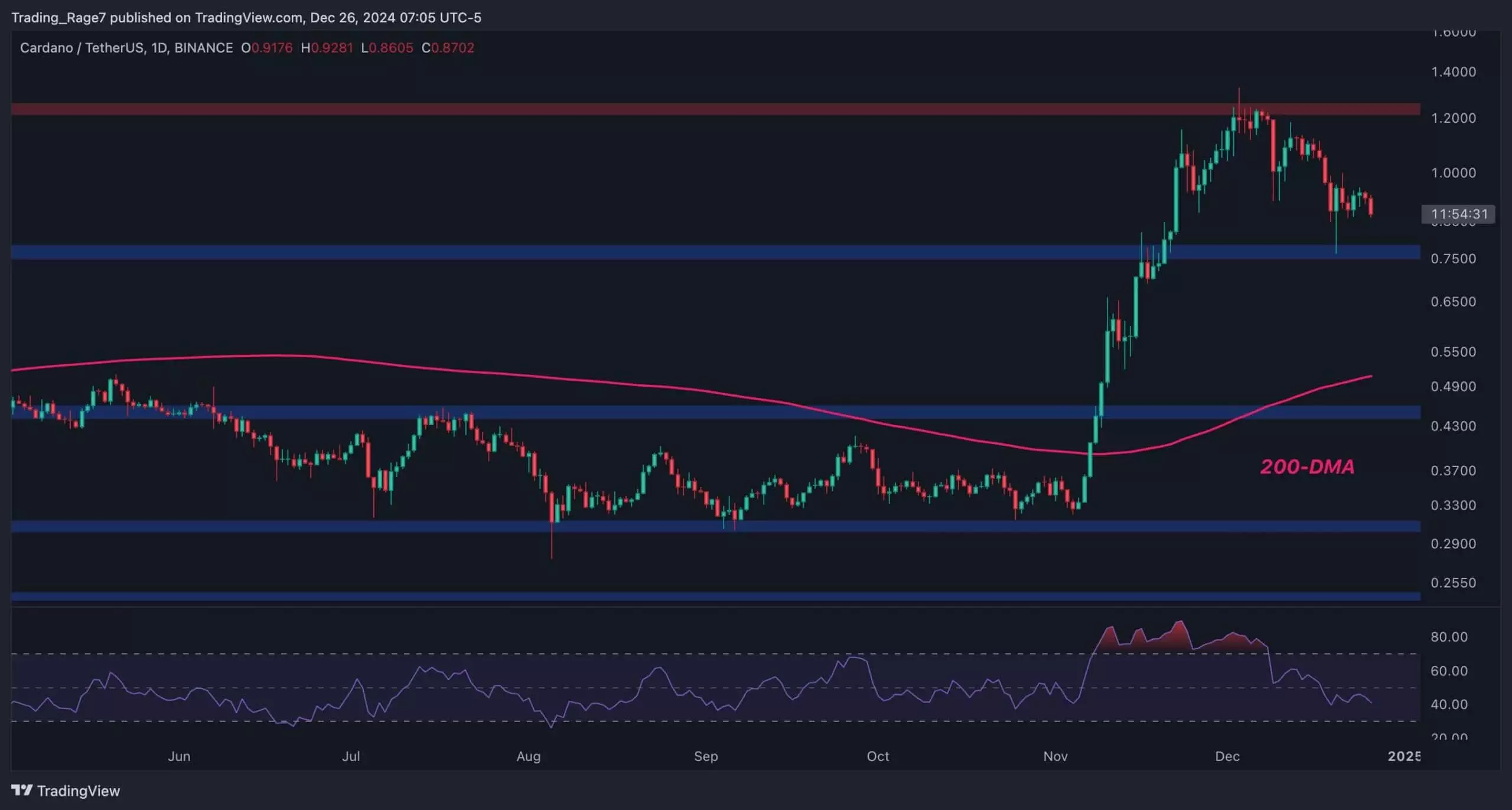Cardano (ADA) has emerged as a point of interest in the cryptocurrency space, particularly as it mirrors the price movements of Bitcoin (BTC). Following a significant rally at the start of November, Cardano’s price action has raised questions among investors, especially as it struggles to maintain momentum. The correlation with Bitcoin’s performance adds layers of complexity to Cardano’s evaluation, a trend seen across various cryptocurrencies that tend to react similarly during market fluctuations.
In the recent past, Cardano punched through its 200-day moving average, indicating optimism among traders. However, reaching the critical resistance zone of $1.2 has proved challenging. This level has functioned as a ceiling, thwarting multiple attempts to sustain a breakout above it. The inability to maintain price action beyond $1.2 has led to a notable correction, pulling the asset back towards the support level of $0.75. This support area serves as a cushion, succeeding in preventing an even more significant price drop. Should this support hold, there seems to be potential for an eventual retest of the $1.2 resistance zone. Conversely, a failure to uphold this support might provoke further declines, potentially targeting the 200-day moving average near the $0.5 mark.
When examining the ADA/BTC pairing, it becomes clear that while Cardano has enjoyed periods of outperformance relative to Bitcoin, this trend may be shifting. Recent price actions indicate that Cardano’s value is depreciating in comparison to Bitcoin on a more extensive timeframe. The critical support level at 1,000 SAT is currently under threat, which could catalyze a downward movement towards the 200-day moving average situated around 700 SAT. Should this scenario unfold, it implies that Bitcoin may continue to outpace Cardano, further complicating Cardano’s market position.
As the market evolves, sentiment plays a pivotal role. Traders and investors are highly attuned to Bitcoin’s movements, and its fluctuations dramatically impact the whole crypto market, including Cardano. If Bitcoin takes a bullish turn and breaches its own resistance levels, it might lead to renewed interest in altcoins like Cardano as investors seek higher advisory returns. However, the uncertainty surrounding the market remains a concern, and external factors—such as regulatory changes, technological advancements, and macroeconomic trends—could influence Cardano’s trajectory.
Cardano’s current price action reflects a mix of resistance and support that is characteristic of a consolidating market. With Bitcoin potentially outpacing Cardano in the near term, stakeholders need to remain vigilant. Observing key price levels, market sentiment, and external influences will be crucial for anticipating future movements in the price dynamics of Cardano. Whether it will regain its footing above $1.2 or retrace further down remains to be seen, making it an asset worthy of close scrutiny in the ever-evolving cryptocurrency landscape.

